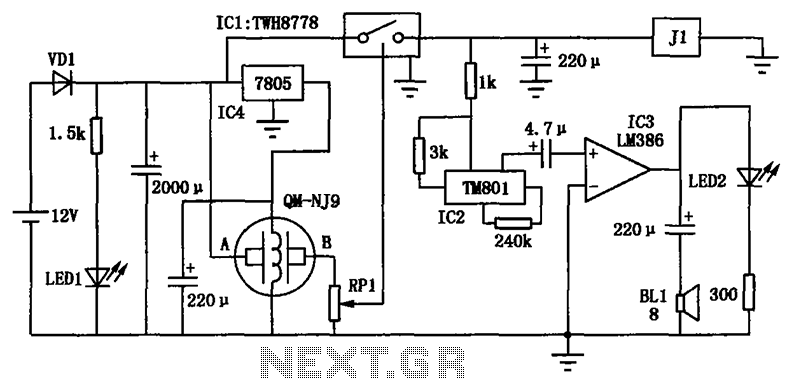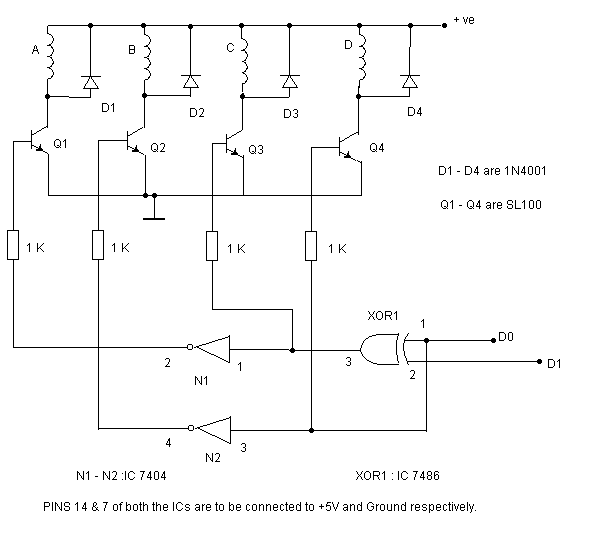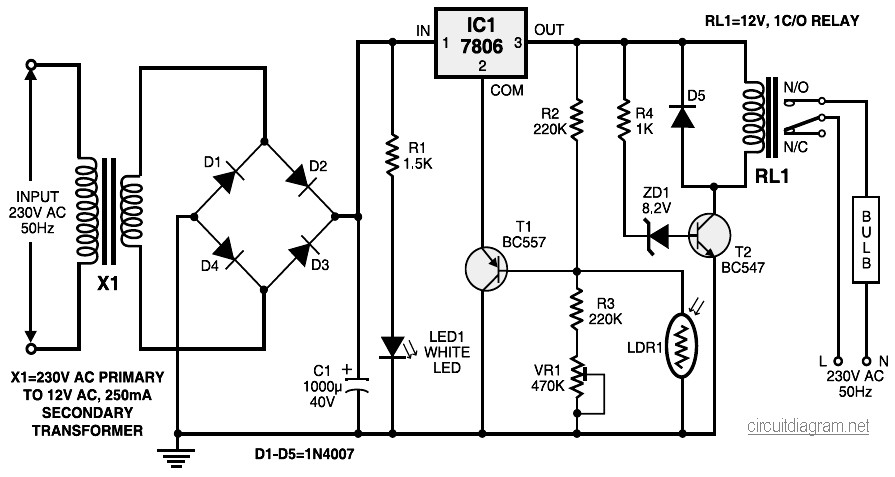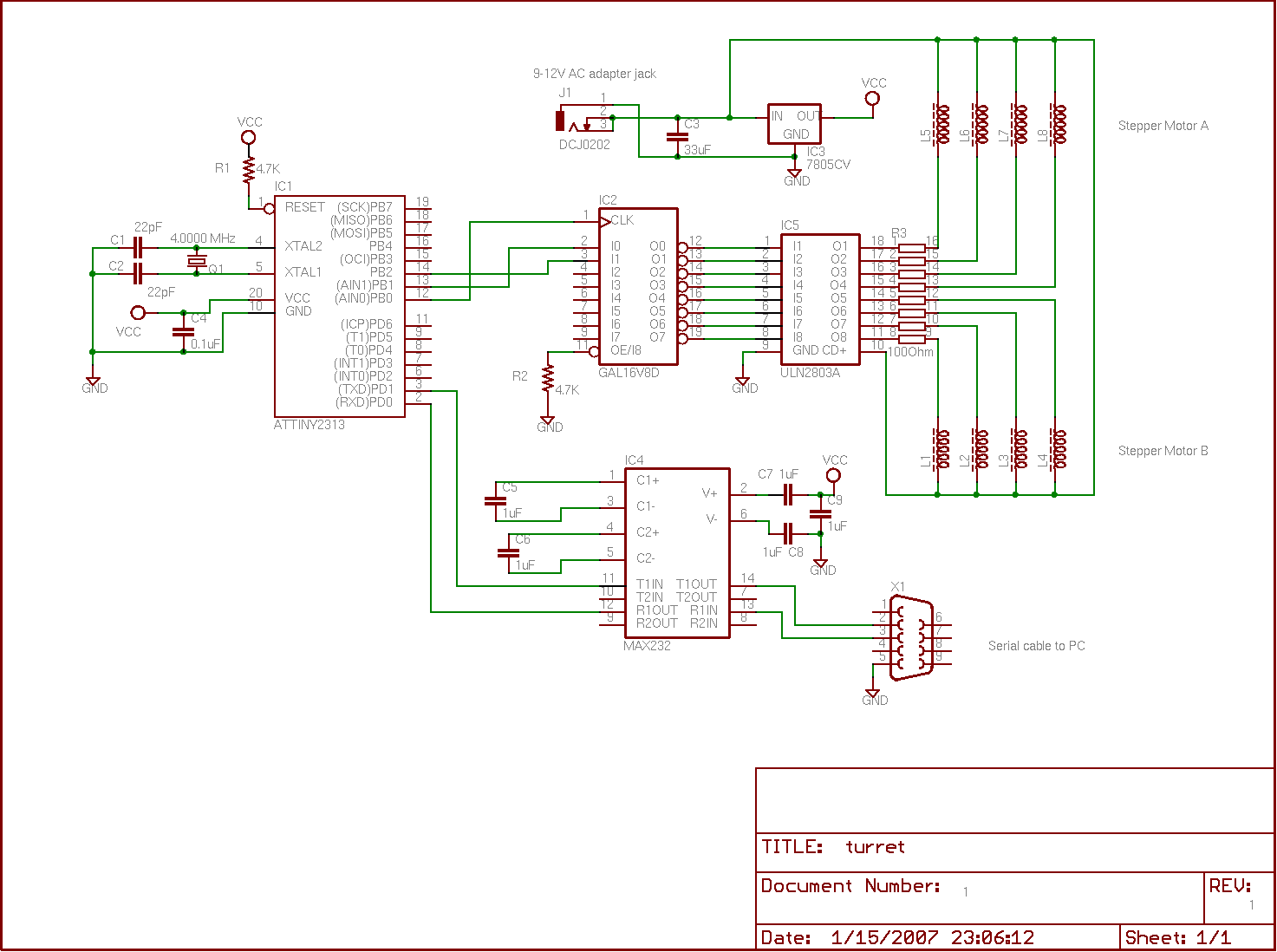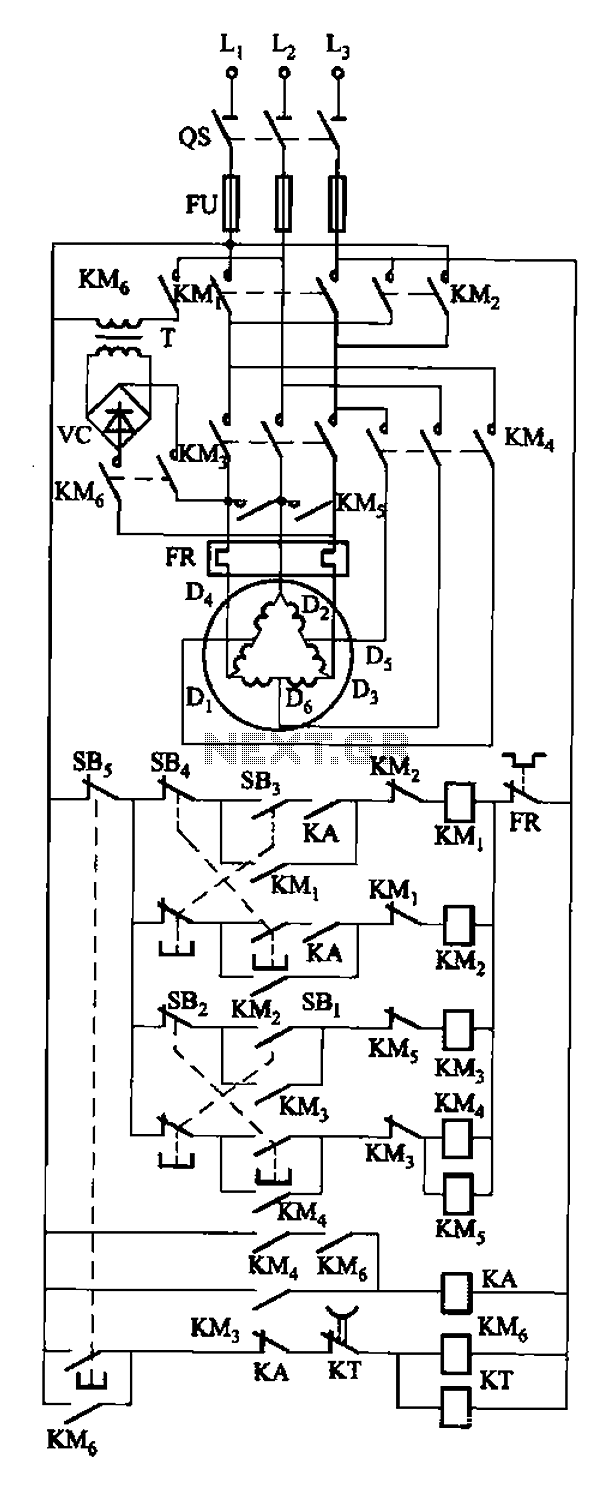
Efficient Fan Speed Controller
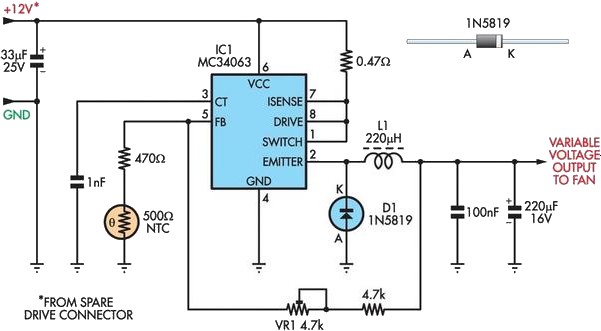
A partial solution to reducing noise from PCs can be achieved by lowering the speed of internal cooling fans. Low-cost fan speed controllers are available, but they often utilize inefficient, heat-generating linear regulators and lack a temperature feedback mechanism. This concept utilizes a commonly available, inexpensive in-car mobile phone charger. Most of these chargers employ standard circuitry and require only minor modifications to function effectively as fan speed controllers with temperature feedback. The majority of in-car chargers are based on the well-known MC34063 DC-DC switch-mode IC. When charging mobile phones, the open-circuit output voltage is typically set between 7V and 9V, achieved through a simple voltage divider across the output, with the center point connecting to the feedback input (pin 5) of the MC34063. To make the output voltage variable with air temperature, the upper resistor of the divider should be replaced with a 4.7kΩ resistor in series with a 4.7kΩ trimpot. The lower half of the divider is then replaced with a 470Ω resistor in series with a 500Ω NTC thermistor. These values are guidelines and can be adjusted to accommodate different thermistor and fan types. It is important to minimize component lead length to prevent introducing noise into the feedback circuit. The correct fan starting voltage is determined through trial and error; the provided circuit values yield a starting voltage of approximately 6.8V at room temperature, but trimpot VR1 can be adjusted to increase this voltage as needed. The output can rise to about 10V if the interior temperature increases sufficiently. The 4.7kΩ resistor can be reduced to 3.9kΩ, and VR1 adjusted to achieve a lower starting voltage if the fan speed remains too high at 7V. After approximately one hour of operation, the fan voltage, controlled by the interior case temperature thermistor, stabilized at 7.4V. Suitable chargers are available from Oatley Electronics, Cat. No. 2D0074, currently priced at $5 for two, which is less than the cost of the MC34063 ICs alone. Data on the MC34063 can be downloaded, and a useful development aid is available. It is important to note that not all chargers come with an output filter capacitor, typically a 220 µF 10V or 16V electrolytic type. Manufacturers may omit this component to save costs, relying on the mobile's battery for filtering. If this component is absent from the charger’s PCB, it should be installed before use.
The proposed circuit utilizes the MC34063 integrated circuit (IC) as the core component for converting the voltage from the in-car charger to a variable output suitable for controlling fan speed based on temperature. The MC34063 operates as a step-down (buck) converter, allowing for efficient voltage regulation with minimal heat generation compared to linear regulators.
The modifications involve creating a voltage divider that incorporates a thermistor, which responds to temperature changes. The NTC thermistor decreases its resistance as the temperature rises, effectively changing the feedback voltage to the MC34063. This feedback mechanism is crucial, as it allows the IC to adjust the duty cycle of its output, thereby controlling the voltage supplied to the fan.
The circuit design should ensure that the thermistor and resistors are selected according to the specific thermal characteristics of the application, as different fans may require different starting voltages and operational characteristics. The use of a trimpot allows for fine-tuning of the output voltage, providing flexibility in achieving desired fan speeds at various temperatures.
Additionally, the inclusion of an output filter capacitor is essential for stabilizing the output voltage and minimizing voltage ripple, which can adversely affect fan performance and longevity. The specified 220 µF capacitor should be rated appropriately for the voltage level, ensuring reliability in operation.
Overall, this design presents a practical and cost-effective solution for managing PC cooling fan noise while maintaining efficient operation through temperature-responsive control.A partial solution to quietening noisy PCs can be to reduce the speed of internal cooling fans. Low-cost fan speed controllers are available, but they often employ inefficient, heat-generating linear regulators and contain no temperature feedback mechanism. This idea makes use of a readily available, cheap in-car mobile phone charger. The majority of these use common circuitry and require only minor modifications to operate as efficient fan speed controllers complete with temperature feedback. Most in-car chargers are based on the well-known MC34063 DC-DC switchmode IC. When used for charging mobile phones, the open-circuit output voltage is typically set to between 7V and 9V.
This is achieved with a simple voltage divider across the output, the centre point of which connects to the feedback input (pin 5) of the MC34063. To make the output voltage var-iable with air temperature, first replace the upper resistor of the divider with a 4.
7k © resistor in series with a 4. 7k © trimpot. The lower half of the divider is then replaced with a 470 © resistor in series with a 500 © NTC thermistor. These values are only a guide and can be varied to suit different thermistor and fan types. Note that component lead length should be minimised to avoid introducing noise into the feedback circuitry.
Getting the correct fan starting voltage is a matter of trial and error. The values shown on the circuit give a starting voltage of about 6. 8V at room temperature but trimpot VR1 can be used to raise this voltage as necessary. The output can then rise to about 10V if the interior temperature rises sufficiently. The 4. 7k © resistor could be reduced to 3. 9k © and VR1 adjusted to give a lower starting voltage if the fan speed is still too high at 7V. After running for one hour or so, the fan voltage as set by the interior case temperature thermistor on my PC settled at 7. 4V. Suitable chargers are available from Oatley Electronics, Cat. No. 2D0074. They`re currently listed at $5 for two, which is less than the price of the MC34063 ICs alone! Data on the MC34063 can be downloaded from and a useful development aid is to be found at. Finally, note that not all chargers have an output filter capacitor installed. Typically, this is a 220 µF 10V or 16V electrolytic type. To save a few cents, the manufacturers sometimes leave this component out, relying on the mobile`s battery to perform the filtering task.
If this component is missing from your charger`s PC board, it should be installed before the supply is used. 🔗 External reference
The proposed circuit utilizes the MC34063 integrated circuit (IC) as the core component for converting the voltage from the in-car charger to a variable output suitable for controlling fan speed based on temperature. The MC34063 operates as a step-down (buck) converter, allowing for efficient voltage regulation with minimal heat generation compared to linear regulators.
The modifications involve creating a voltage divider that incorporates a thermistor, which responds to temperature changes. The NTC thermistor decreases its resistance as the temperature rises, effectively changing the feedback voltage to the MC34063. This feedback mechanism is crucial, as it allows the IC to adjust the duty cycle of its output, thereby controlling the voltage supplied to the fan.
The circuit design should ensure that the thermistor and resistors are selected according to the specific thermal characteristics of the application, as different fans may require different starting voltages and operational characteristics. The use of a trimpot allows for fine-tuning of the output voltage, providing flexibility in achieving desired fan speeds at various temperatures.
Additionally, the inclusion of an output filter capacitor is essential for stabilizing the output voltage and minimizing voltage ripple, which can adversely affect fan performance and longevity. The specified 220 µF capacitor should be rated appropriately for the voltage level, ensuring reliability in operation.
Overall, this design presents a practical and cost-effective solution for managing PC cooling fan noise while maintaining efficient operation through temperature-responsive control.A partial solution to quietening noisy PCs can be to reduce the speed of internal cooling fans. Low-cost fan speed controllers are available, but they often employ inefficient, heat-generating linear regulators and contain no temperature feedback mechanism. This idea makes use of a readily available, cheap in-car mobile phone charger. The majority of these use common circuitry and require only minor modifications to operate as efficient fan speed controllers complete with temperature feedback. Most in-car chargers are based on the well-known MC34063 DC-DC switchmode IC. When used for charging mobile phones, the open-circuit output voltage is typically set to between 7V and 9V.
This is achieved with a simple voltage divider across the output, the centre point of which connects to the feedback input (pin 5) of the MC34063. To make the output voltage var-iable with air temperature, first replace the upper resistor of the divider with a 4.
7k © resistor in series with a 4. 7k © trimpot. The lower half of the divider is then replaced with a 470 © resistor in series with a 500 © NTC thermistor. These values are only a guide and can be varied to suit different thermistor and fan types. Note that component lead length should be minimised to avoid introducing noise into the feedback circuitry.
Getting the correct fan starting voltage is a matter of trial and error. The values shown on the circuit give a starting voltage of about 6. 8V at room temperature but trimpot VR1 can be used to raise this voltage as necessary. The output can then rise to about 10V if the interior temperature rises sufficiently. The 4. 7k © resistor could be reduced to 3. 9k © and VR1 adjusted to give a lower starting voltage if the fan speed is still too high at 7V. After running for one hour or so, the fan voltage as set by the interior case temperature thermistor on my PC settled at 7. 4V. Suitable chargers are available from Oatley Electronics, Cat. No. 2D0074. They`re currently listed at $5 for two, which is less than the price of the MC34063 ICs alone! Data on the MC34063 can be downloaded from and a useful development aid is to be found at. Finally, note that not all chargers have an output filter capacitor installed. Typically, this is a 220 µF 10V or 16V electrolytic type. To save a few cents, the manufacturers sometimes leave this component out, relying on the mobile`s battery to perform the filtering task.
If this component is missing from your charger`s PC board, it should be installed before the supply is used. 🔗 External reference
